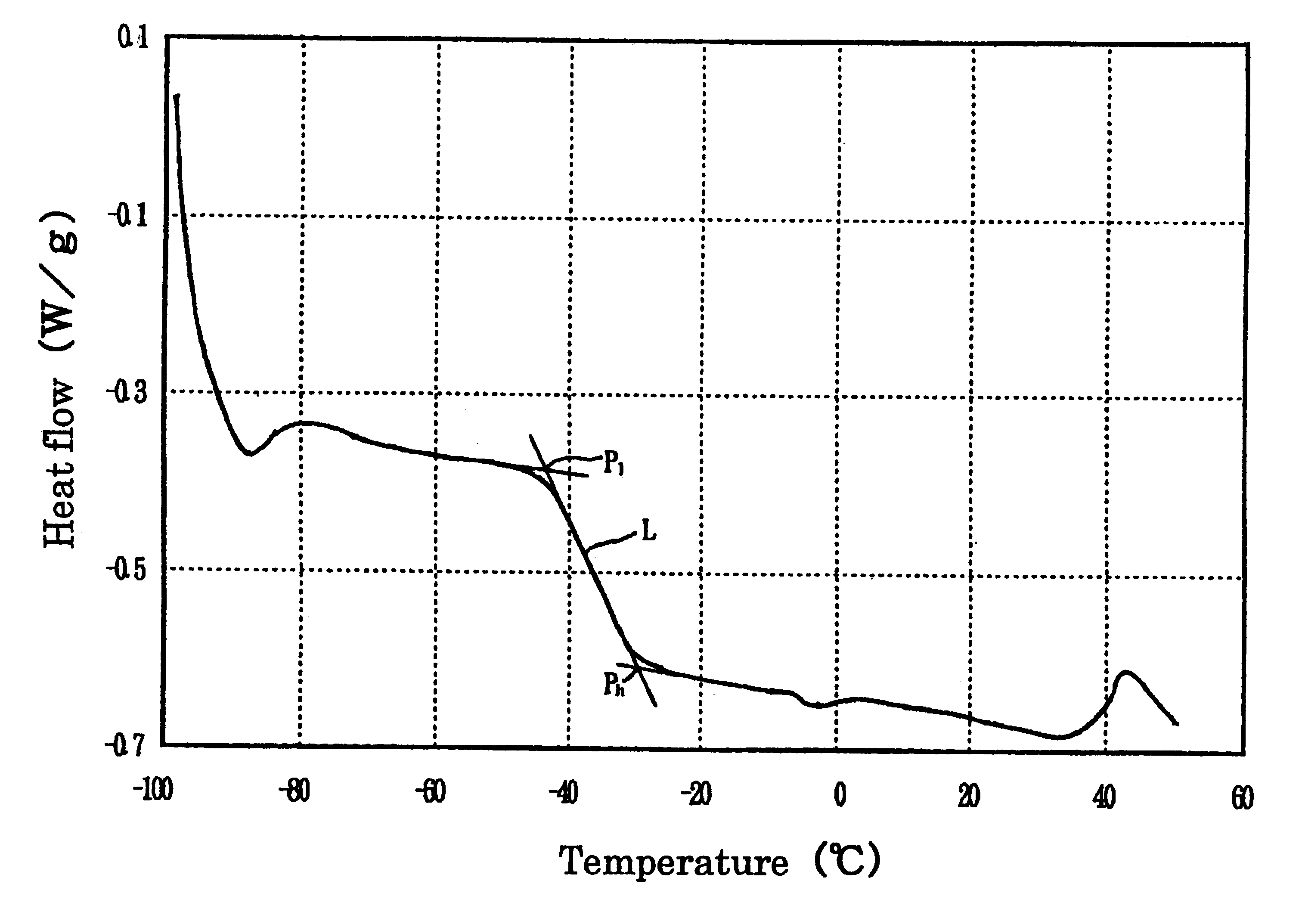Conjugated diene-based rubber and method of producing the same, oil extended rubber and rubber composition containing the same
a technology of diene-based rubber and oil-extension rubber, which is applied in the direction of group 4/14 element organic compounds, tyre parts, vehicle components, etc., can solve the problems of poor wear resistance, low wet skid resistance, and inability to achieve sufficient reinforcing effect,
- Summary
- Abstract
- Description
- Claims
- Application Information
AI Technical Summary
Benefits of technology
Problems solved by technology
Method used
Image
Examples
production example 2
Oil Extended Conjugated Diene-based Rubber [B]
In a polymerization vessel, 200 parts of water, 4.5 parts of rosin acid soap, 69 parts of butadiene, 19 parts of styrene and 7 parts of acrylonitrile were charged. Subsequently, the temperature of the polymerization vessel was set at 5.degree. C., and 0.03 parts of p-menthane hydroperoxide as a radical initiator, 0.02 parts of sodium ethylene diamine tetraacetate, 0.01 parts of ferrous sulfate heptahydrate and 0.03 parts of sodium formaldehyde sulfoxylate were added to the polymerization vessel, whereby initiating the polymerization. Once the conversion of the polymerization reached 30%, additional 5 parts of acrylonitrile was added and then at the conversion of the polymerization reaching 60% diethylhydroxylamine was added to terminate the polymerization. Subsequently, a conjugated diene-based rubber B extended with an aromatic oil was obtained similarly to Production Example 1.
The conjugated diene-based rubber 2 contained in the latex ...
production example 3
Oil Extended Conjugated Diene-based Rubber [C]
In a polymerization vessel, 200 parts of water, 4.5 parts of rosin acid soap, 66 parts of butadiene, 26 parts of styrene and 8 parts of acrylonitrile were charged. Subsequently, the temperature of the polymerization vessel was set at 5.degree. C., and 0.03 parts of p-menthane hydroperoxide as a radical initiator, 0.02 parts of sodium ethylene diamine tetraacetate, 0.01 parts of ferrous sulfate heptahydrate and 0.03 parts of sodium formaldehyde sulfoxylate were added to the polymerization vessel, whereby initiating the polymerization. Once the conversion of the polymerization reached 60% diethylhydroxylamine was added to terminate the polymerization.
Subsequently, a conjugated diene-based rubber C extended with an aromatic oil was obtained similarly to Production Example 1.
The conjugated diene-based rubber 3 contained in the latex had the Mooney viscosity of 125, the bound acrylonitrile content of 10% by mass, the bound styrene content of ...
production example 4
Oil Extended Conjugated Diene-based Rubber [D]
In a polymerization vessel, 200 parts of water, 4.5 parts of rosin acid soap, 58 parts of butadiene and 42 parts of styrene were charged. Subsequently, the temperature of the polymerization vessel was set at 5.degree. C., and 0.03 parts of p-menthane hydroperoxide as a radical initiator, 0.02 parts of sodium ethylene diamine tetraacetate, 0.01 parts of ferrous sulfate heptahydrate and 0.03 parts of sodium formaldehyde sulfoxylate were added to the polymerization vessel, whereby initiating the polymerization. Once the conversion of the polymerization reached 60% diethylhydroxylamine was added to terminate the polymerization.
Subsequently, a conjugated diene-based rubber [D] extended with an aromatic oil was obtained similarly to Production Example 1.
The conjugated diene-based rubber 4 contained in the latex had the Mooney viscosity of 126, the bound styrene content of 35% by mass, the weight-average molecular weight of 760,000 and the glas...
PUM
| Property | Measurement | Unit |
|---|---|---|
| temperatures | aaaaa | aaaaa |
| temperatures | aaaaa | aaaaa |
| glass transition point | aaaaa | aaaaa |
Abstract
Description
Claims
Application Information
 Login to View More
Login to View More - R&D
- Intellectual Property
- Life Sciences
- Materials
- Tech Scout
- Unparalleled Data Quality
- Higher Quality Content
- 60% Fewer Hallucinations
Browse by: Latest US Patents, China's latest patents, Technical Efficacy Thesaurus, Application Domain, Technology Topic, Popular Technical Reports.
© 2025 PatSnap. All rights reserved.Legal|Privacy policy|Modern Slavery Act Transparency Statement|Sitemap|About US| Contact US: help@patsnap.com


